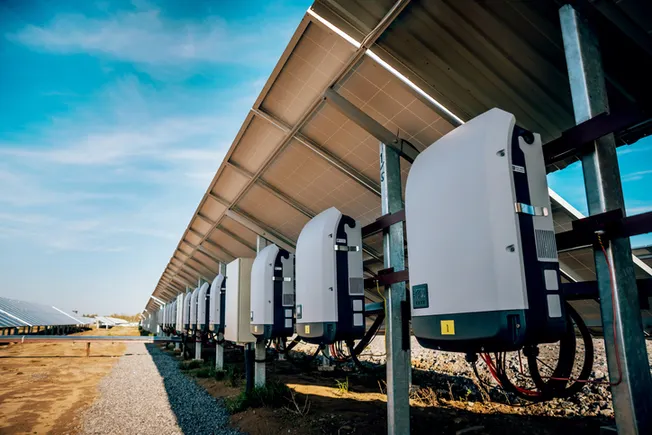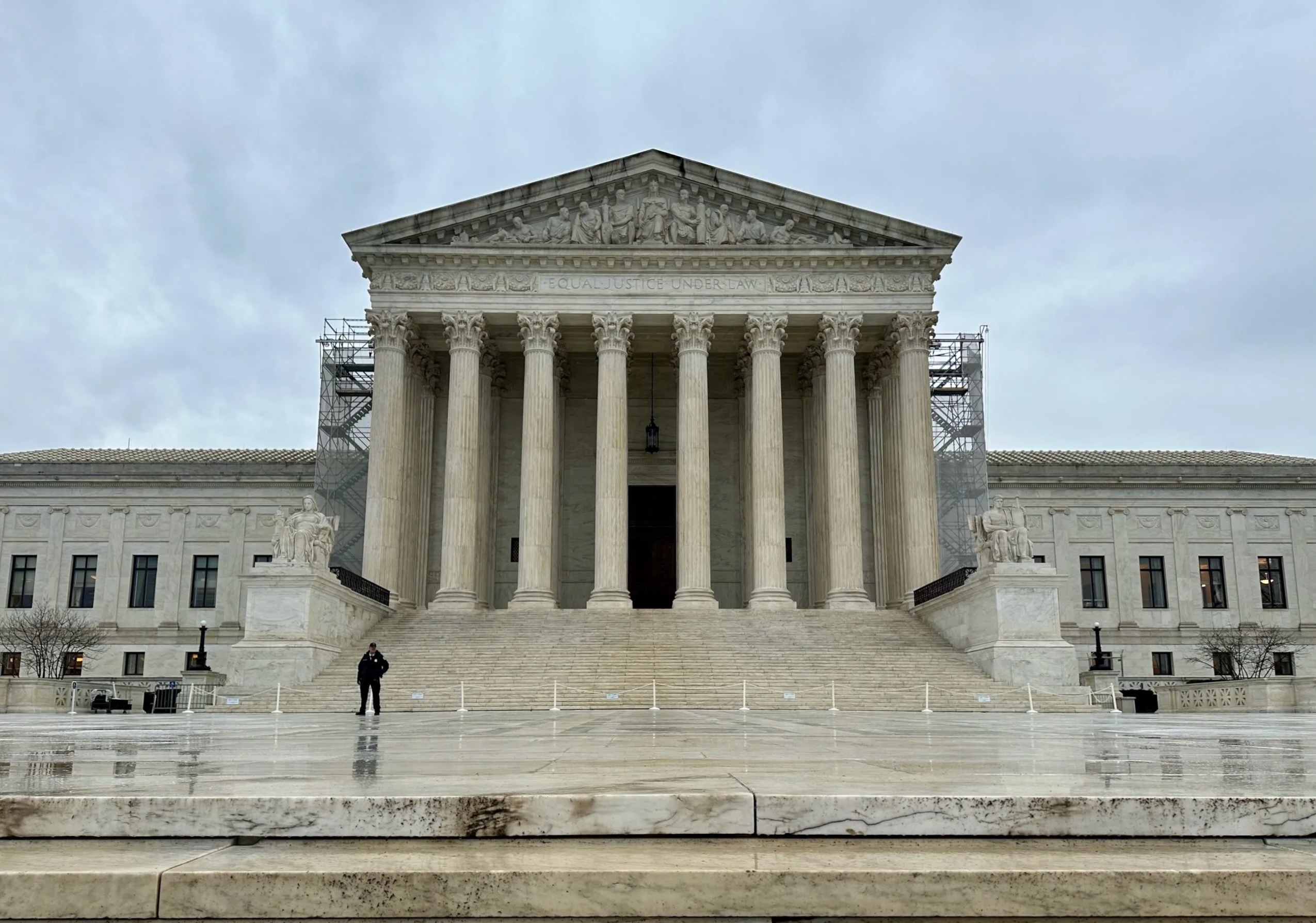No clear decision emerges from arguments on judges’ power to block Trump’s birthright citizenship order
The Supreme Court on Thursday was divided over whether a federal judge has the power to block President Donald Trump’s executive order ending birthright citizenship while the case moves through […] The post No clear decision emerges from arguments on judges’ power to block Trump’s birthright citizenship order appeared first on SCOTUSblog.

The Supreme Court on Thursday was divided over whether a federal judge has the power to block President Donald Trump’s executive order ending birthright citizenship while the case moves through the lower courts. The Trump administration told the justices it should be able to at least partly implement the order. Although several justices in recent years have expressed skepticism about so-called nationwide injunctions, which bar the government from enforcing a law or policy anywhere in the country, during more than two hours of oral arguments, it was not clear whether a majority of the justices were ready to bar such injunctions altogether.
Arguments on Thursday mostly steered clear of the question of whether Trump’s order is legal under the Constitution – what is known as the merits of the case – instead focusing mostly on procedural questions. In particular, some justices were dubious about whether a proposed alternative to universal injunctions, a class action, would actually be an improvement, while others seemed to suggest that these disputes would be especially inappropriate ones to reach the question because, in their view, Trump’s executive order is so clearly unconstitutional.
During his first term in office, Trump suggested that he might sign an executive order to end birthright citizenship. He did not do so, but while campaigning for a second term in office he pledged to issue such an order if elected.
Shortly after being sworn in on Jan. 20, Trump signed an order providing that, beginning on Feb. 19, children born in the United States will not be entitled to citizenship if their parents are in this country illegally or temporarily.
Before the order could go into effect, a variety of plaintiffs – including states, immigrants’ rights groups, and pregnant women who worried that their children would not be eligible for citizenship under Trump’s order – went to federal court around the country, seeking to block it from going into effect.
The 14th Amendment to the Constitution provides that “[a]ll persons born or naturalized in the United States, and subject to the jurisdiction thereof, are citizens of the United States and of the State wherein they reside.” The amendment was added to the Constitution specifically to overrule the Supreme Court’s notorious 1857 decision in Dred Scott v. Sandford, which held that a Black person whose ancestors were brought to this country and sold as enslaved persons were not entitled to any protection from the federal courts because he was not a U.S. citizen.
Four decades after the 14th Amendment was adopted, the Supreme Court ruled that Wong Kim Ark, who was born in San Francisco to parents of Chinese descent, was a U.S. citizen and could not be denied entry into the country. Writing for the majority, Justice Horace Gray reiterated that the 14th Amendment “affirms the ancient and fundamental rule of citizenship by birth within the territory, in the allegiance and under the protection of the country, including all children here born of resident aliens.”
In his dissent, Chief Justice Melville Fuller argued that Wong could not be a U.S. citizen because his parents were Chinese citizens with a duty to the emperor of China and therefore he was not “completely subject to the jurisdiction of” the United States.
In Seattle, Senior U.S. District Judge John Coughenour was the first federal judge to weigh in on Trump’s order. He called it “blatantly unconstitutional” and barred the government from enforcing it anywhere in the country.
Two other judges – U.S. District Judges Deborah Boardman in Maryland and Leo Sorokin in Massachusetts – also put Trump’s order on hold.
When federal appeals courts declined to step in, the Trump administration came to the Supreme Court on its emergency docket with what it termed a “modest” request: to allow the government to partly enforce the executive order, even if it remains blocked from doing so with respect to the specific challengers in these three cases, and allow the government to develop guidance about how it would implement the order. The Trump administration complained that universal injunctions like these, sometimes referred to as nationwide injunctions, are unconstitutional judicial overreach. A federal judge, the government reasoned, can only issue judgments that pertain to the litigants before them.
The justices announced on April 17 that they would hear arguments on the government’s request on May 15 – approximately two weeks after the justices would normally be finished with oral arguments for the 2024-25 term.
Representing the Trump administration, U.S. Solicitor General D. John Sauer told the justices that Trump’s executive order “reflects the original meaning of the 14th Amendment,” which, he argued, was only intended to apply to the children of former enslaved persons. Universal injunctions, he contended, are a “bipartisan problem that has now spanned the last five” presidential administrations and create a variety of practical issues: They prevent “novel legal questions” from percolating in the lower courts, they allow plaintiffs to shop for a favorable forum, they require courts to act too quickly, they circumvent the more stringent rules governing class actions, and they create an “ongoing risk of conflicting judgments.”
Jeremy Feigenbaum, the solicitor general of New Jersey, represented the states challenging the executive order. He contended that Sorokin’s order was “properly designed” to provide a remedy for the states. The executive order, he emphasized, would allow citizenship to hinge on where someone was born or whether someone crossed state lines. And the lower courts do not need to weigh in on the merits of the birthright citizenship question before the Supreme Court takes it up, he told the justices, because it already settled the question more than a century ago.
Kelsi Corkran, who represented the private plaintiffs challenging the order, also stressed that “every court to have considered the issue” agrees that Trump’s executive order is “patently unlawful.” And she warned of “catastrophic consequences” if the government is allowed to implement the order.
Justice Clarence Thomas appeared sympathetic to the Trump administration, suggesting that they lack any real historical analogue. “We survived until the 1960s without universal injunctions,” Thomas observed. Justice Sonia Sotomayor later countered this point with a longer view of the relevant history.
Chief Justice John Roberts also seemed to downplay the possible implications of eliminating universal injunctions. He noted that the court had acted quickly earlier this year in a challenge to a law that would have required TikTok to shut down in the United States unless its parent company sold it by an impending deadline. “We did the TikTok case in a month,” he told Sauer.
But other justices were more dubious about the government’s suggestion that, instead of universal injunctions, challengers could bring either individual lawsuits or class actions.
Justice Neil Gorsuch, who has been one of the more vocal opponents of universal injunctions on the court, noted that certifying a class action takes time and requires the members of the class to overcome various hurdles, while the injury from the government’s conduct is immediate and ongoing.
Justice Elena Kagan queried whether individual challengers would even be able to have a class certified, which would allow a group of plaintiffs to obtain collective relief. She pressed Sauer on whether the government would later argue that the birthright citizenship case was not an appropriate one for a class action, eventually telling him that his answer “does not fill me with great confidence.”
For his part, Justice Samuel Alito also questioned whether class actions would address all of the practical problems that Sauer contends result from universal injunctions. If they won’t, Alito asked Sauer, “what is the point” of using them instead of universal injunctions?
Justice Amy Coney Barrett followed up on this point later, asking Sauer whether there would be any difference between a successful class action and a universal injunction.
Sauer told Barrett that class actions would have the symmetry lacking in a universal injunction because both members of the class and the government would be bound by the court’s decision.
Sauer ran into hot water with Barrett a few minutes later, when she pressed him on whether the Trump administration would follow a ruling by the U.S. Court of Appeals for the 2nd Circuit in the case of an individual plaintiff when it came to others challenging the executive order. Sauer responded that the Department of Justice would “generally” – but not always – follow the court of appeals’ decision.
During his time at the lectern, Feigenbaum noted that states cannot use class actions. If the justices are inclined to narrow the circumstances in which courts can issue universal injunctions, he suggested, one way to do so would be to allow such injunctions when alternative remedies are not legally or practically workable – as in the case of the states here.
Feigenbaum explained that it would not be an adequate remedy for a court to simply bar the Trump administration from enforcing the executive order in New Jersey, because the state would also have to verify citizenship for babies who are born in other states and then move to New Jersey. It would cause “chaos on the ground,” Feigenbaum warned the justices, if “people’s citizenship turns on and off when you cross state lines.”
Barrett appeared sympathetic, telling Feigenbaum that states might need a broader remedy even if universal injunctions are not appropriate. How, she asked, would I craft a ruling that would take care of you?
Corkran also stressed that class actions were not the “channeling mechanism” that the government portrayed it as. The federal rule governing class actions focuses on permanent relief, she observed, making it hard to obtain preliminary class relief of the kind that her clients need in this case.
She suggested a slightly different limiting principle from Feigenbaum: Courts should allow universal injunctions, she said, only in facial challenges – that is, cases arguing that a statute or policy is always unconstitutional – involving fundamental constitutional rights.
Justice Brett Kavanaugh also focused on the practical points of a ruling in the government’s favor. If you win, he asked Sauer, what will hospitals and states do? When Sauer responded that parents would need documents showing that they were legally in the United States to establish their children’s citizenship, Kavanaugh shot back, “For all the newborns? Is that how it’s going work?”
Although the Trump administration had only asked the justices to partly block the lower courts’ orders, and not to weigh in on the constitutionality of Trump’s executive order itself, some justices found it hard to separate the two, especially in light of the relief that the Trump administration was seeking.
Sotomayor was the first to raise this point. She told Sauer that although the executive order violates a line of Supreme Court cases, the Trump administration’s argument boils down to a suggestion that the Supreme Court and the lower courts can’t issue a ruling to stop it. She suggested that the court should go ahead and grant review on the birthright citizenship question now, without waiting for the lower courts to weigh in on the merits.
Kagan echoed that concern, telling Sauer to assume “you’re dead wrong” on the question of whether Trump’s executive order is legal. That could mean, she cautioned, that without a universal injunction, for several years there could be an “untold number of people” who wouldn’t get U.S. citizenship even though Supreme Court precedent says that they are entitled to it.
The question of when the court takes up the birthright citizenship question is in the government’s control, Kagan emphasized, because the government has consistently lost on that issue in the lower courts. “You need somebody to lose,” Kagan said, but “nobody’s going to lose in this case.”
Notably, although the court’s liberal justices were the most outspoken in their belief that Trump’s order violates the Constitution, there was no support voiced by the other justices for Sauer’s contention that it does not. The only real question was when, not if, the justices will reach that question.
A decision in this case is expected by late June or early July.
The post No clear decision emerges from arguments on judges’ power to block Trump’s birthright citizenship order appeared first on SCOTUSblog.





















































































































































